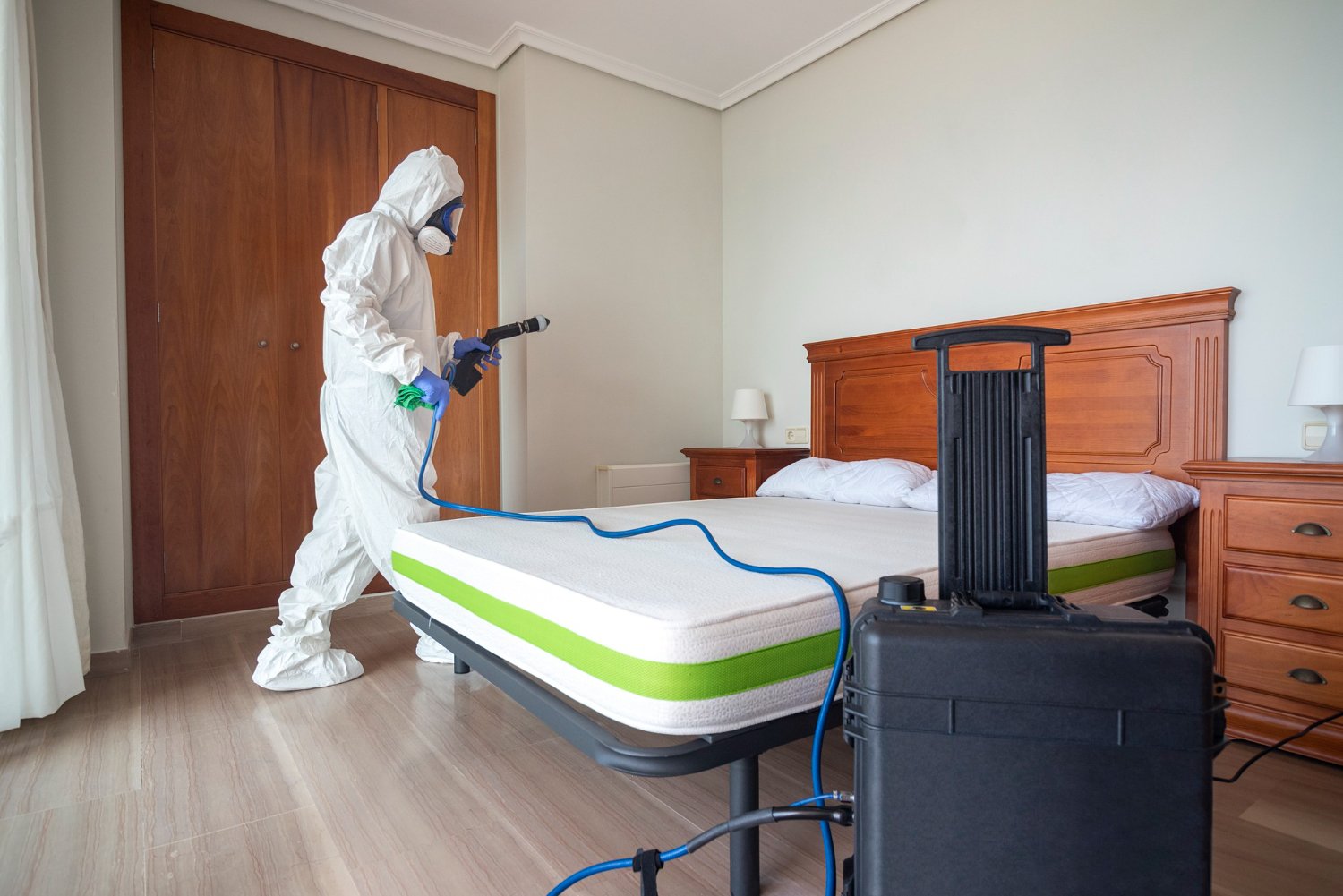Types of Insect Control: Which Method Is Right for Your Problem?
When confronted with an insect infestation, the selection of an ideal approach for bug control is essential in efficiently handling the scenario. From chemical therapies to biological services, there exists a range of strategies that can be used to deal with different sorts of parasites. Each method includes its very own collection of advantages and factors to consider, making the decision-making procedure a nuanced one. Recognizing the subtleties of each technique and examining their compatibility with the certain bug infestation at hand is necessary for attaining long-lasting success in pest monitoring. By checking out the various kinds of insect control approaches readily available, individuals can make informed choices tailored to their distinct circumstances, making certain a much more efficient and sustainable end result in bug removal.
Chemical Bug Control
Chemical pest control includes using synthetic or normally derived chemicals to handle and eradicate pest populations successfully. This technique is typically made use of in farming, forestry, and residential settings to deal with a wide array of insects, consisting of rodents, bugs, and weeds. Making use of chemical pesticides can give fast and targeted solutions to pest problems, making it a preferred choice for numerous individuals and services.
Among the essential advantages of chemical bug control is its capacity to promptly remove parasites, minimizing the threat of damages to plants, residential property, and human wellness. By utilizing specific chemicals that target particular insects, this technique can efficiently manage invasions while reducing injury to advantageous organisms and the environment when used appropriately.
Nonetheless, the use of chemical pest control additionally elevates worries regarding prospective damaging impacts on non-target types, water sources, and human health. It is crucial to adhere to security guidelines, use chemicals responsibly, and take into consideration alternate pest control techniques to reduce these risks and ensure lasting bug administration methods.
Biological Parasite Control
Biological pest control, likewise called biocontrol, utilizes living microorganisms to lower and manage insect populations normally. This method uses the power of nature to manage pests without the demand for synthetic chemicals. Biocontrol can entail the introduction of all-natural opponents of the parasite types, such as parasites, killers, or pathogens, to reduce parasite populaces. By utilizing the bug's natural killers or microorganisms, biological insect control uses a sustainable and eco friendly option to pest administration.

Mechanical Parasite Control
Using hands-on and physical methods to manage parasite populaces, mechanical pest control offers a different technique that does not count on using living microorganisms or synthetic chemicals. This approach entails using obstacles, catches, or various other gadgets to literally prevent or eliminate parasites. By blocking parasite entrance factors or establishing up traps to capture them, mechanical insect control can effectively lower infestations without presenting chemicals right into the atmosphere.
One typical instance of mechanical bug control is the use of mesh screens on doors and home windows to avoid pests from entering structures. This simple yet efficient technique serves as a physical obstacle, maintaining insects out while enabling proper air flow. Additionally, gadgets like mousetraps, fly swatters, and ultrasonic repellents drop under the mechanical insect control classification.
While mechanical parasite control methods can be labor-intensive and need regular surveillance and maintenance, they provide a lasting and environmentally friendly remedy for managing insect invasions. By incorporating various mechanical methods, property owners can produce a detailed parasite control strategy that minimizes dependence on chemical pesticides.
Physical Pest Control

Some common physical bug control techniques consist of using barriers such as displays or webs to prevent parasite entrance, catches to catch and get rid of insects, and hand-picking to physically get rid of insects from plants or frameworks. Furthermore, strategies like warm treatments can be made use of to manage pests like bed insects by elevating the temperature to degrees that are lethal to the insects.
Physical bug control is find pest control near me particularly beneficial in integrated bug management (IPM) methods, where multiple parasite control methods are incorporated for effective bug management while lessening making use of chemicals. By using physical pest control methods, people can efficiently resolve insect problems with minimal ecological impact.
Integrated Insect Administration
When implementing physical insect control approaches as part of parasite management methods, Integrated Parasite Management (IPM) emerges as a thorough approach that leverages different techniques to efficiently regulate pest populaces. IPM focuses on long-lasting avoidance of parasites through a mix of organic, social, physical, and chemical devices customized to specific insect problems. By integrating several control techniques, IPM intends to minimize the risks related to parasites while likewise reducing reliance on chemical solutions.
One key aspect of IPM is the emphasis on monitoring and assessing pest populations to determine the most appropriate control methods. This aggressive approach enables very early intervention and targeted techniques, causing a lot more effective pest management. Additionally, IPM advertises eco-friendly methods by prioritizing non-chemical control approaches and just utilizing pesticides as a last hope.
Conclusion

By using the insect's natural predators or microorganisms, organic insect control supplies a environmentally friendly and sustainable remedy to pest administration. - Kings cincinnati pest control companies
Utilizing physical and hand-operated methods to take care of pest populaces, mechanical parasite control supplies a different technique that does not depend on the use of living microorganisms or artificial chemicals.A reliable technique to managing bug populaces you could try this out without relying on chemical or organic methods includes the use of physical pest control strategies.When applying physical pest control approaches as component of insect monitoring approaches, Integrated Bug Administration (IPM) arises as a comprehensive method that leverages various strategies to effectively control pest populations. Chemical insect control includes browse this site the usage of chemicals, biological pest control uses all-natural predators, mechanical parasite control includes physical obstacles, physical pest control includes capturing or removing pests, and incorporated insect management combines several methods for an all natural method to pest control.